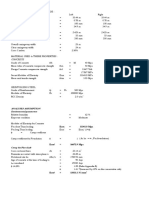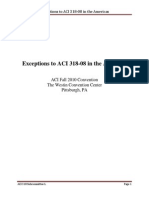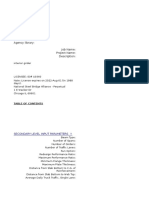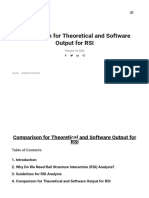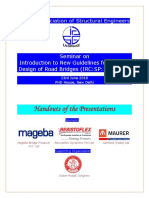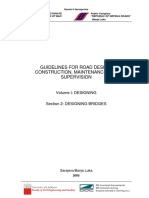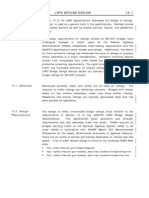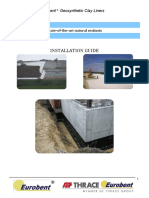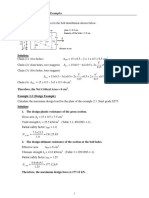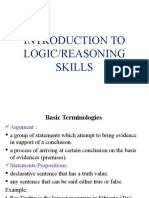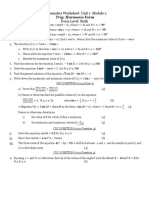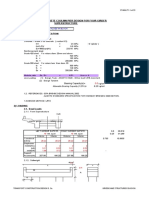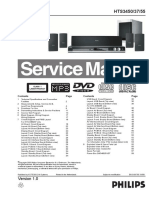0% found this document useful (0 votes)
47 views17 pagesMettu University: Super Structure Design of Bridge
This document provides an example of the design process for the superstructure of a concrete deck bridge with 11m spans. It includes:
1) Material properties and design parameters like concrete strength, rebar yield strength, and the HL-93 live load.
2) Calculation of minimum slab depth based on AASHTO requirements.
3) Analysis using the longitudinal strip method to determine load effects from dead loads, design truck, tandem, and lane loading based on equivalent strip widths and influence lines.
4) Selection of resistance factors and load combinations for strength and serviceability limit states to calculate load effects and check design requirements.
Uploaded by
Sami IGCopyright
© © All Rights Reserved
We take content rights seriously. If you suspect this is your content, claim it here.
Available Formats
Download as PDF, TXT or read online on Scribd
0% found this document useful (0 votes)
47 views17 pagesMettu University: Super Structure Design of Bridge
This document provides an example of the design process for the superstructure of a concrete deck bridge with 11m spans. It includes:
1) Material properties and design parameters like concrete strength, rebar yield strength, and the HL-93 live load.
2) Calculation of minimum slab depth based on AASHTO requirements.
3) Analysis using the longitudinal strip method to determine load effects from dead loads, design truck, tandem, and lane loading based on equivalent strip widths and influence lines.
4) Selection of resistance factors and load combinations for strength and serviceability limit states to calculate load effects and check design requirements.
Uploaded by
Sami IGCopyright
© © All Rights Reserved
We take content rights seriously. If you suspect this is your content, claim it here.
Available Formats
Download as PDF, TXT or read online on Scribd
/ 17










